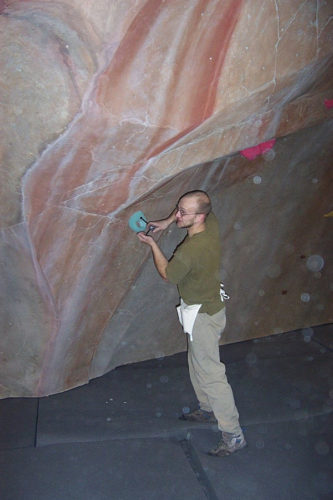
Dear CBJ readers,
Like you, I love climbing. The business of climbing, talking about climbing, and particularly the act of climbing. It’s hard to pinpoint precisely why we love climbing; we just do. Our reasons for loving climbing are diverse as we are.
As I take the helm at CBJ, and after working in climbing gyms since 1997, I’m struck by how much the business of climbing has changed. Writers have examined how climbing itself has changed, how indoor climbing drives the growth, and how many of today’s climbers will never touch rock. Climbing has become accessible all over the country to people of all backgrounds. It’s 2019 and practically anyone can become a climber.
Now that climbing is mainstream, I believe we’ve entered the third era of the business of climbing. The first defined our culture with Yvon Chouinard’s piton-powered-vanlife. That era bred the largest brands in the business, the icons Patagonia, Black Diamond and others, who made products for enthusiasts to use in wild places of the world.
Fast forward a few decades to the second era, arriving in the early 90s with people like Chris Warner and Mark Melvin and the visionary first climbing gyms. They had no idea that their businesses, Earth Treks and Touchstone, respectively, would be among the largest players in rapidly growing industry. They just saw the demand for climbing, and provided high-quality alternatives to the rock.
Another few decades brings us to today. Recently we got our first coast-to-coast chain, serious capital is making plays, Olympic medals have begun flowing, and Coca-Cola is sponsoring climbers. There are over 50 brands of climbing holds sold in this country, and over a dozen wall builders for your next gym. Almost 8 million people are expected to climb this year in the U.S..
Which all adds up to… we’ve made it. All of us who have worked in this business for much of our lives, we were right. Climbing is awesome, it’s an incredible activity that can make your life better. It has always deserved to be mainstream.
And so now I believe it’s time for our industry to grow up. Every business needs to address their responsibilities to customers and community. As an industry we must address our impacts, increase our professionalism, improve accessibility, and use climbing to uplift the communities in which we operate.
As business leaders, we carry the most weight from that responsibility. We are the ones both producing more climbers and also harvesting returns from those climbers. Our profits directly derive from more climbers. More impacts, across our communities, are the intangible social and environmental result, and noone forces us to pay for them. But we can choose to do so.
We can choose to lean into our responsibility, to work towards:
- Creating inclusive and open environments, because everyone deserves the chance to climb in a place they are comfortable.
- Driving our customers to learn and adopt low-impact methods when venturing outdoors.
- Investing in our employee teams and treating our workplaces professionally.
- Harnessing the power of climbing to improve the communities we touch.
Climbing won. It’s huge now. And so is our opportunity to help. I hope you choose to.
Thanks for reading CBJ,
Scott Rennak
Publisher & Editor-In-Chief
Climbing Business Journal
P.S. In case you’re looking for ways to support our climbing community, we’ve recently added a new directory for climbing non-profits. I encourage you to pick one and donate your next raffle proceeds.


Scott has been promoting indoor climbing since 1997 when he bought Climb Time of Cincinnati and started what would become the American Bouldering Series. Since then he has helped hundreds of small businesses grow including climbing gyms and manufacturers. Scott is the owner and publisher of CBJ, and is available for projects through Reach Climbers. In his free time he still scours nearby hills for fresh boulders, skis all year, and is a dedicated father.







